Spiders, spinnerets, spigots, and silk
I’ve seen many fascinating things under the scanning electron microscope. Pollen, various crystals, diatoms, and even viral particles. But nothing could have prepared me for the Fall of 2019, when I discovered spider butts.

Silk production begins in the silk glands as a dense liquid material packed with proteins called spidroins. Spiders have a number of silk glands for producing different kinds of silk. Different needs call for different silk properties: stickiness, springiness, strength… These can all be carefully fine-tuned by the spider for the job at hand.
| The spidroin-1 protein | The spidroin-2 protein |
|---|---|
 |
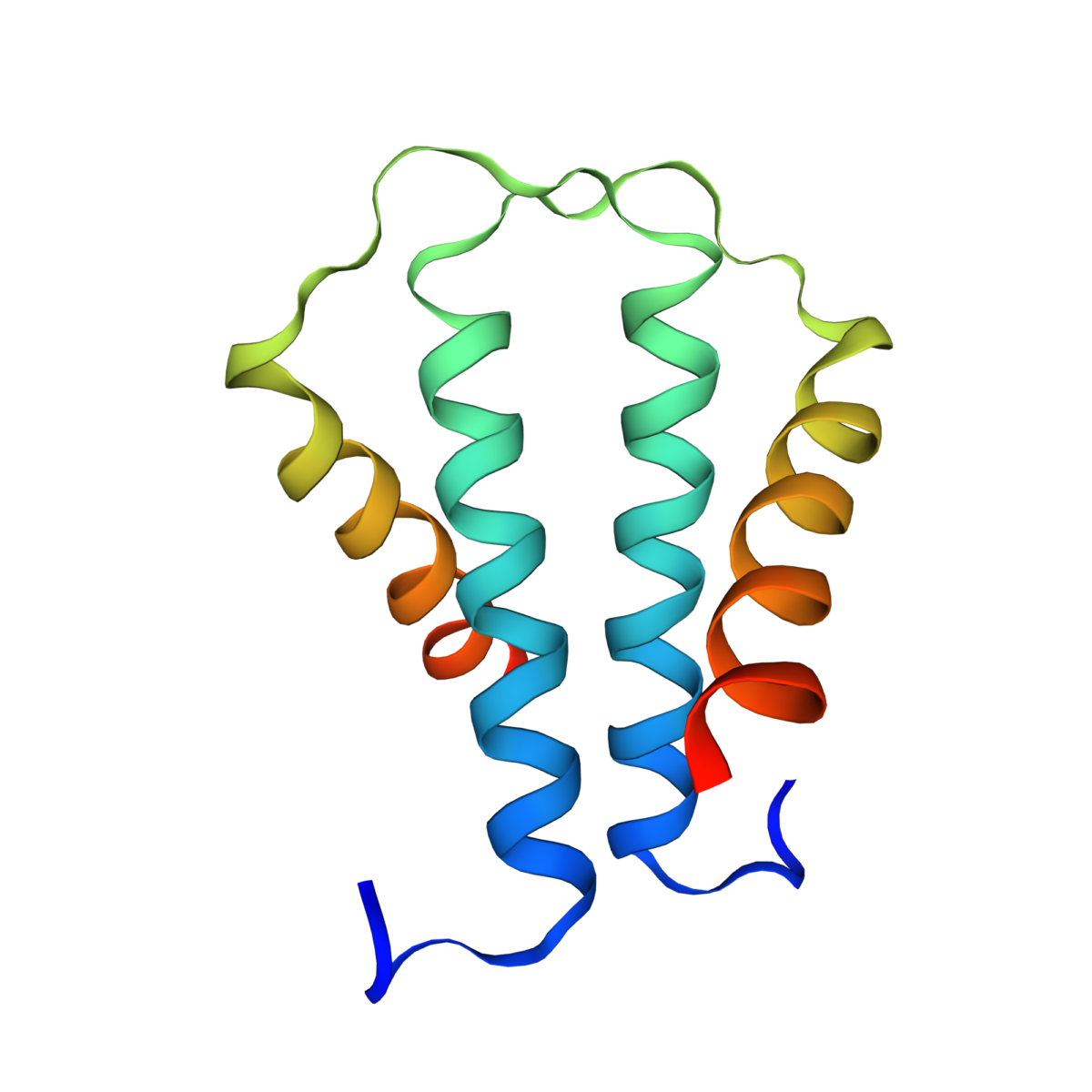 |
Ultimately the protein-rich liquid silk gets expressed through the spinnerets. On a typical house spider, the spinnerets look like a tiny spot on the bottom of the abdomen.
| A common spider, low magnification | ~100x optical magnification |
|---|---|
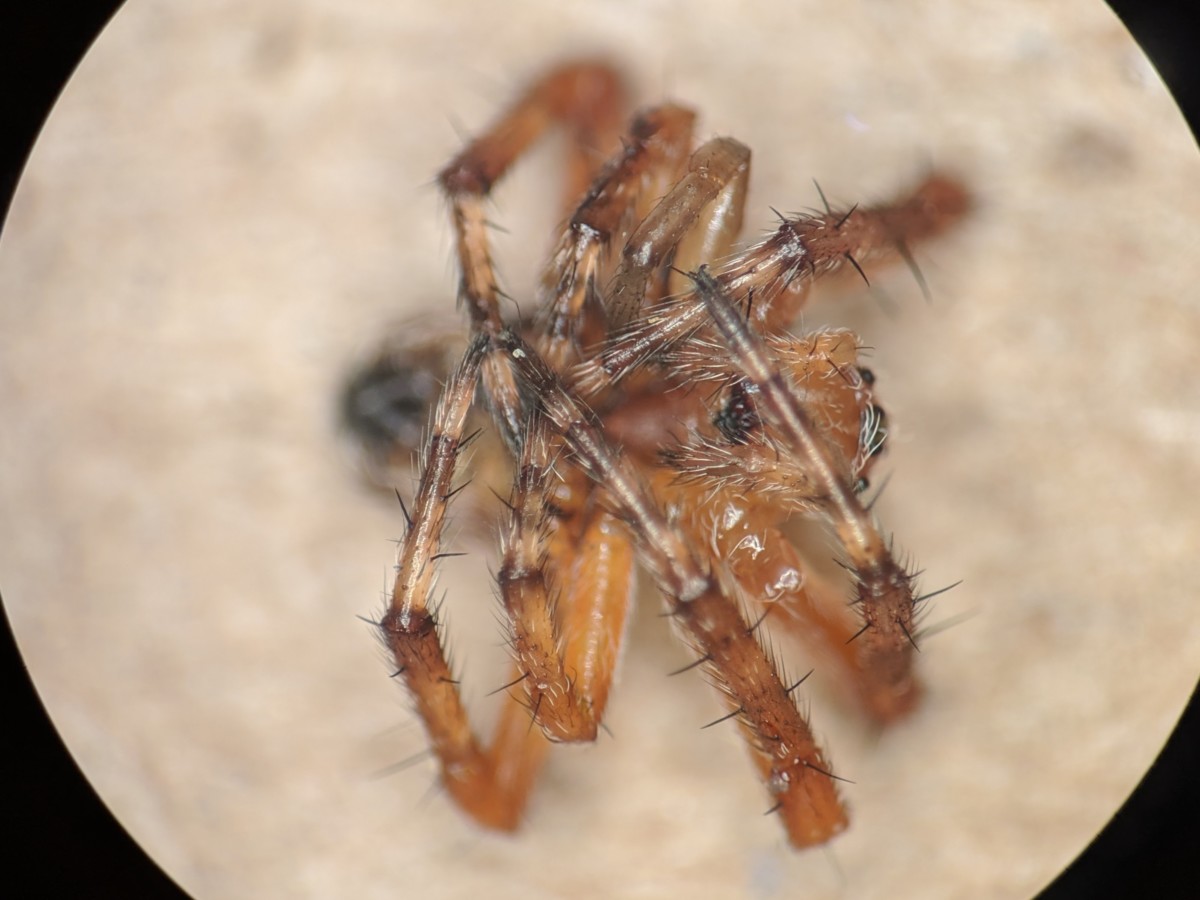 |
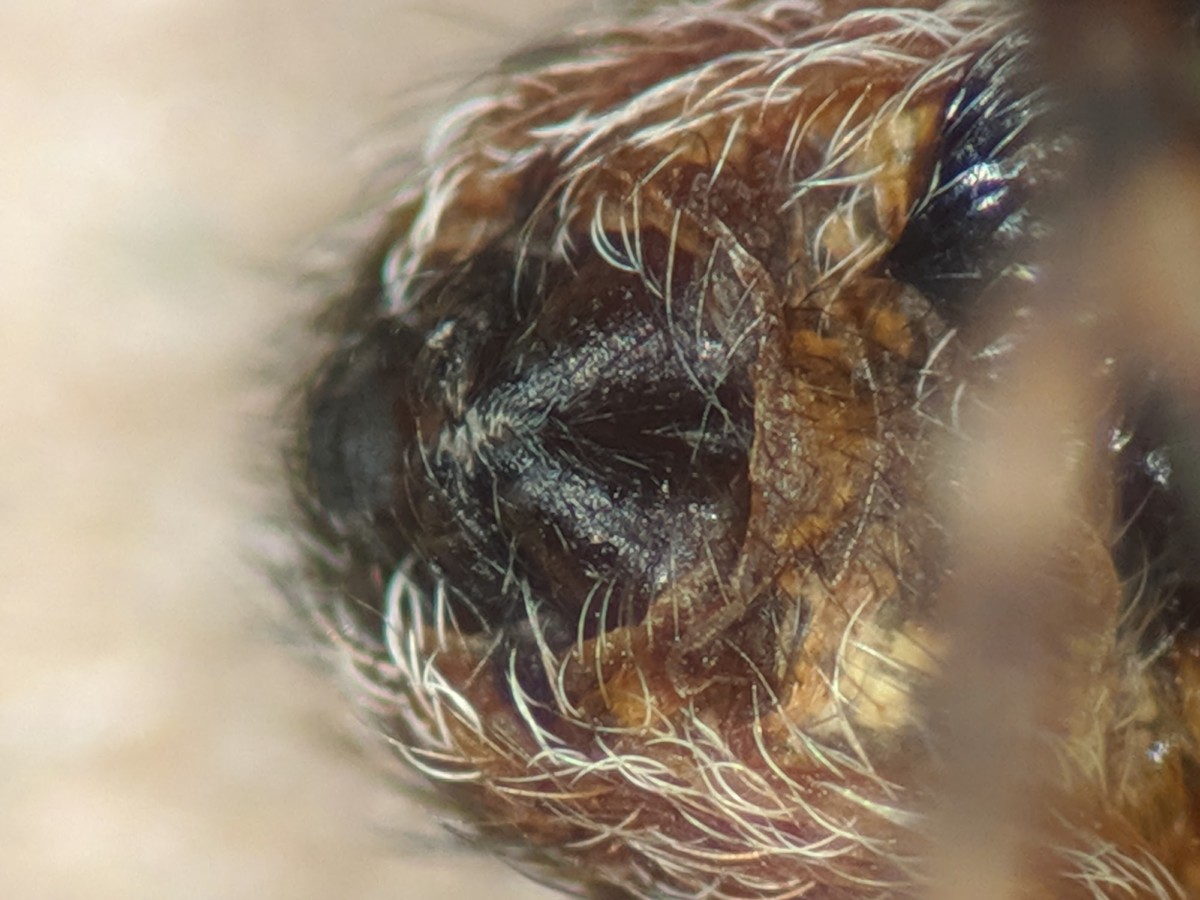 |
The dark lobes are part of the spinneret complex. The tiny translucent hairs at the tips are spigots. They are actually hollow, and the silk is expressed through them just like icing from a pastry bag.
To get closer we’ll need to use the SEM.
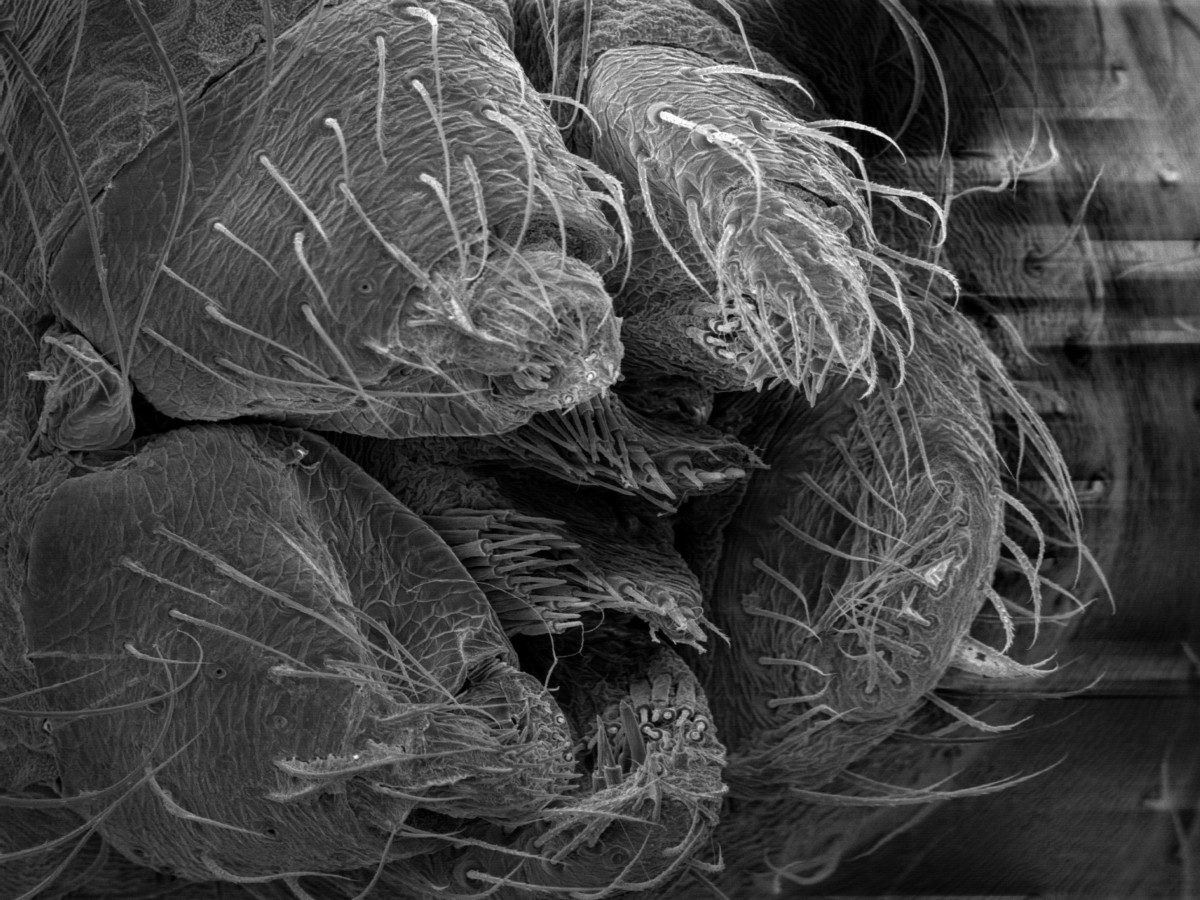
This is from the same spider, rotated 180 degrees. You can see five large outer lobes and two more inner groupings. The lobe on the right of this one isn’t functional; it’s a vestigial lobe without any actual spigots. There are hundreds of spigots on the other lobes in this photo. Let’s get closer.
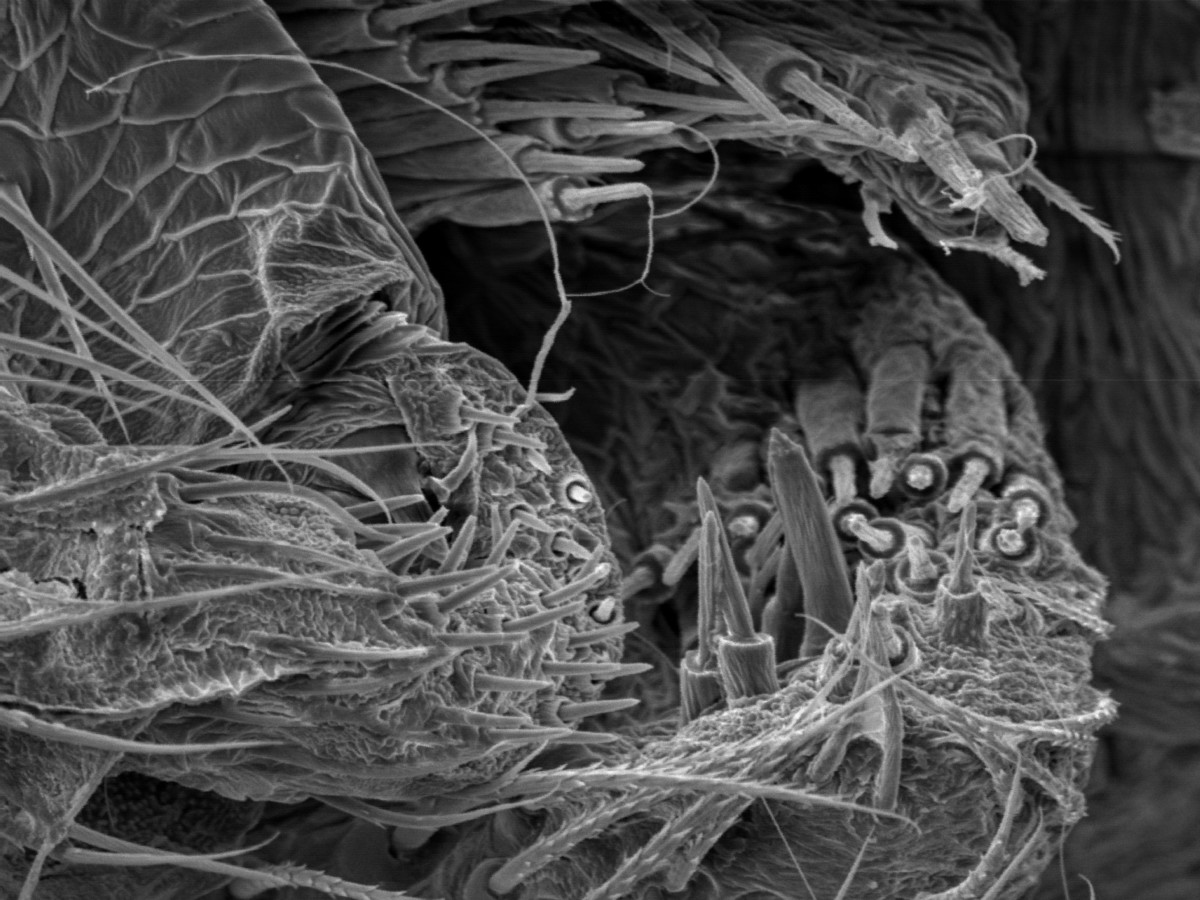
You can see a variety of shapes and sizes of spigots. The spiky fibers are hairs; the spigots look more like needles. Some are thicker for producing drag line, the strongest silk type. It’s what spiders use to hang from, or to make the structural parts of a hanging web. Others are long and thin for producing finer types of fiber.
Just how thin do these fibers get?
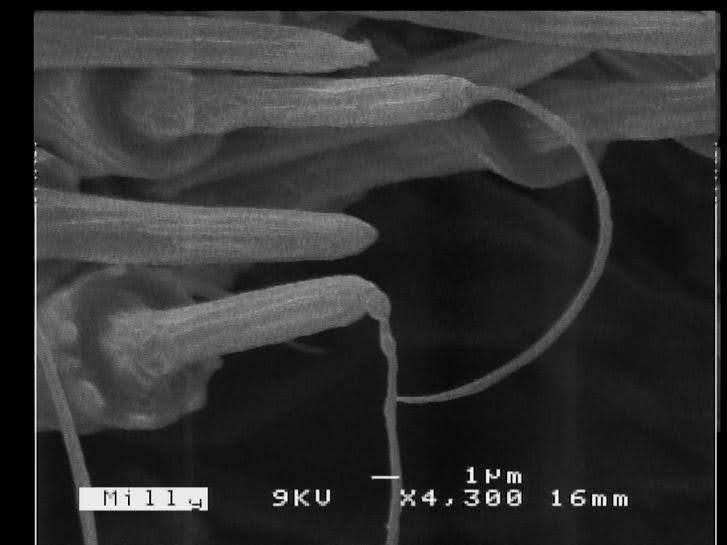
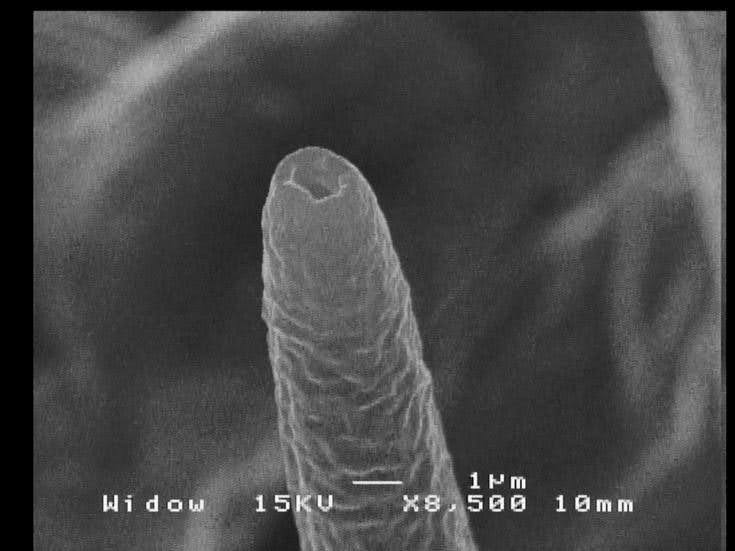
Incredibly, some of the finer silk strands are less than half a micron across– about the wavelength of violet light, and smaller than blue! Many of these fibers are twisted together to make useful structures for the spider’s needs.

Different spider species have varying aptitude for making webs. Some (like the golden orb weaver) specialize in the classic hanging hunting net. Others cast sticky nets while silently hunting prey on the ground. A specialized kind of silk is used for holding egg sacs together, and another for making airtight diving helmets for hunting underwater. There are many different documented kinds of silk, and each spider has a collection of spigots that reflect its particular specialty.
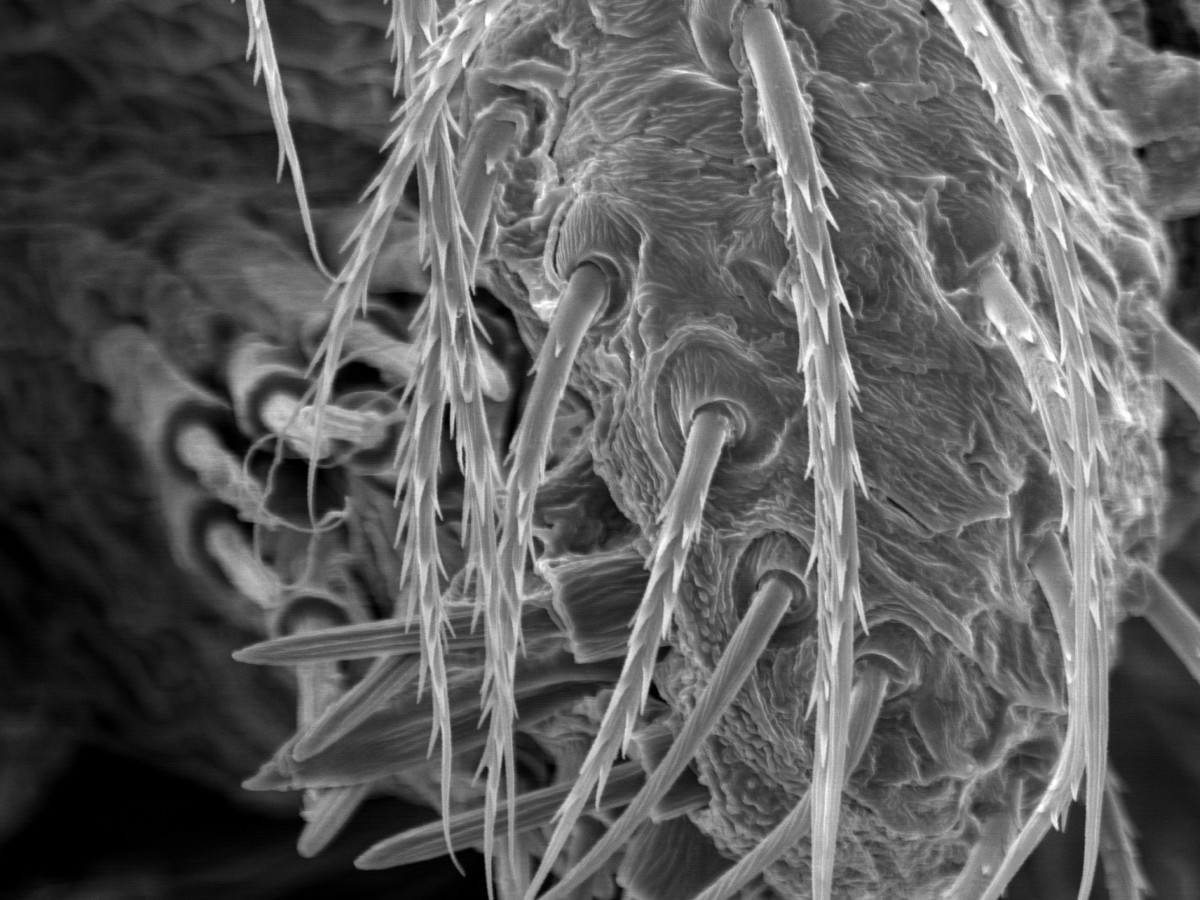


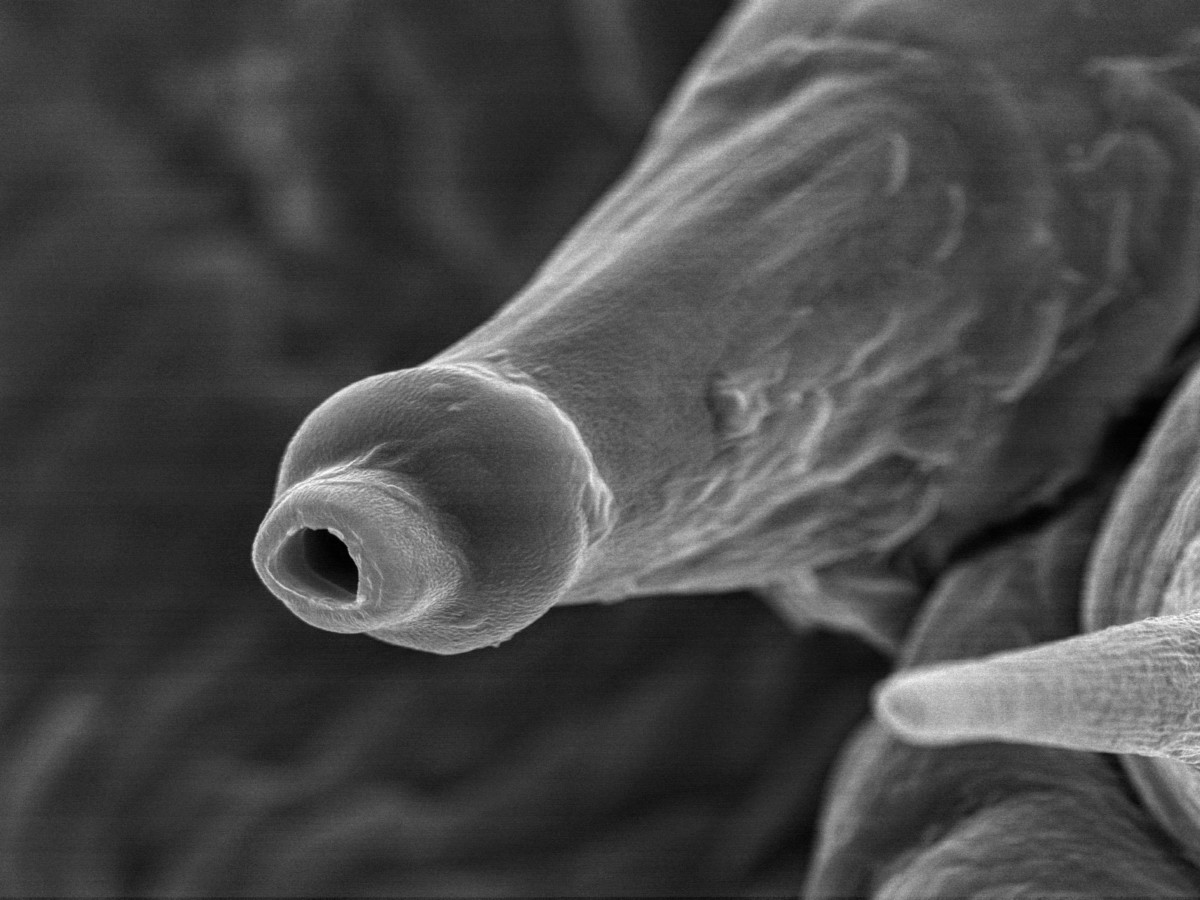
I’m not great at identifying spider species, but these were all found in Seattle and include a huntsman, a black widow, and a couple of others.